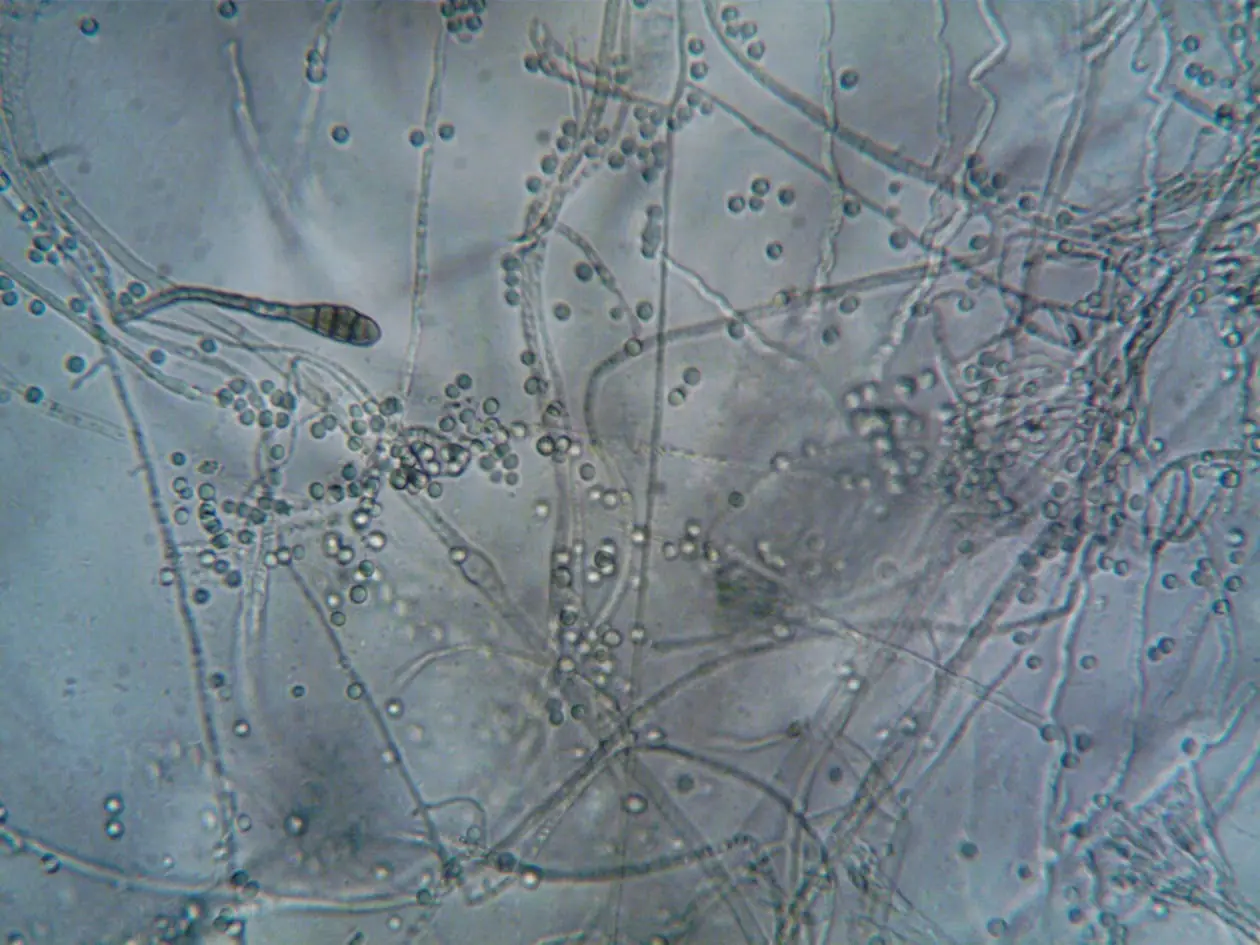
Deadly Airborne Fungus Threatens Five U.S. States: Scientists Warn of Rapid Spread and Fatal Consequences
An invisible threat is drifting silently across parts of the United States. You can’t see it, smell it, or feel it-but it's already in the air you breathe. In five key states, scientists warn that a dangerous airborne fungus is rapidly spreading, with the potential to destroy human tissue and evade modern treatments.
This is not a scene from a dystopian film or a horror video game. It’s real, and it’s happening now.

A Real-World Threat That Mirrors Fiction
While The Last of Us captivated audiences with a fungal apocalypse driven by the fictional Cordyceps infection, the reality we face may be even more insidious. Instead of grotesque transformations or zombie-like outbreaks, the real-world fungal threat doesn’t turn you into a monster - it simply kills you from within.
The culprit? Aspergillus fumigatus, a naturally occurring fungus that produces tiny airborne spores capable of infiltrating the lungs, evading immune defenses, and attacking multiple organs. Scientists warn that in warm, humid regions of the U.S., particularly Florida, Texas, Louisiana, Georgia, and California, conditions are now ideal for this fungus to thrive - and evolve.
As Professor Norman van Rhijn of the University of Manchester bluntly put it: “We’re talking about hundreds of thousands of lives, and continental shifts in species distributions. In 50 years, where things grow and what you get infected by is going to be completely different.”

What Is Aspergillus fumigatus and Why Is It So Dangerous?
Aspergillus fumigatus is a species of fungus found commonly in soil, compost, air ducts, and decaying organic matter. It produces microscopic spores - millions can fit on the head of a pin - that are regularly inhaled by humans without issue. In healthy individuals, the immune system effectively neutralizes the spores. But in immunocompromised people, the results can be catastrophic.
Once inside the body, the fungus can trigger aspergillosis, a range of illnesses that include allergic reactions, chronic infections, and invasive disease. The most severe form, invasive aspergillosis, is often fatal and typically targets the lungs before spreading to the brain, heart, kidneys, or other organs.
Worse still, the fungus releases aflatoxins, among the most potent natural carcinogens known to science. These toxins don’t just damage one organ - they simultaneously target the lungs, liver, spleen, colon, and kidneys.
Where the Danger Is Greatest: Five States in the Crosshairs
According to recent environmental and health monitoring data, five states have emerged as hotspots for Aspergillus fumigatus activity:
- Florida
- Texas
- Louisiana
- Georgia
- California
All five share hot, humid climates ideal for fungal growth. Each is also heavily populated, creating ideal conditions for airborne spore dispersion. In urban areas like Miami, Houston, Los Angeles, and Atlanta, aging buildings and outdated HVAC systems create perfect environments for spore accumulation and circulation.
In agricultural zones, the danger multiplies. Disturbing soil during farming activities - including tilling, harvesting, and construction - sends clouds of spores into the air. Farm workers and residents in rural communities are regularly exposed, often without any form of protective equipment.
Tracking the full extent of the fungal spread is challenging. Spores are microscopic, easily transported by wind, and nearly impossible to detect without specialized testing. Climate conditions, human activity, and infrastructure all contribute to the rapid and often invisible expansion of the threat.

How It Starts - and How It Kills
Infection typically begins in the lungs, mimicking common respiratory illnesses like pneumonia, bronchitis, or the flu. This deceptive similarity often leads to misdiagnosis or delayed treatment.
In high-risk patients - including those undergoing chemotherapy, people with HIV/AIDS, organ transplant recipients, and individuals with chronic lung diseases - the fungus quickly takes root. The immune system struggles to contain the infection, allowing it to spread into the bloodstream and reach vital organs.
The statistics are stark:
- Among organ transplant recipients, only 59% survive one year after developing invasive aspergillosis.
- For stem cell transplant recipients, survival drops to 25%.
- ICU data reveals aspergillosis as one of the top four infections most likely to cause death among critically ill patients.
Despite the clear and growing risk, awareness remains dangerously low.
Drug Resistance: A Looming Catastrophe
As if the fungus weren’t lethal enough, Aspergillus fumigatus is also developing resistance to antifungal medications - and the root of the problem lies in agriculture.
Azoles, the most commonly used antifungal drugs, are widely applied to crops to prevent mold and spoilage. Unfortunately, this practice exposes environmental fungi to small doses of the drugs, allowing resistant strains to evolve. These strains then infect humans, often with deadly results.
A 2023 study published in Applied and Environmental Microbiology found azole-resistant Aspergillus strains in farm soil across at least seven U.S. states. Alarmingly, many of these resistant strains no longer respond to standard treatments, forcing doctors to use more toxic or less effective alternatives.
Genetic studies reveal that resistant strains can share DNA with non-resistant ones, rapidly spreading resistance traits. What was once a rare phenomenon is now alarmingly common - and spreading fast.

The Role of Climate Change
Rising global temperatures are making this fungal threat even worse. Aspergillus fumigatus thrives in warm, humid environments, and climate change is expanding these habitats dramatically. Regions that once experienced cooler, drier conditions are now becoming breeding grounds for the fungus.
A University of Manchester study suggests that if current trends continue, the fungus’s habitat range could increase by 75% by the year 2100. This means millions more Americans - and eventually billions worldwide - will be exposed to dangerous levels of airborne spores.
Extreme weather events, including hurricanes, floods, and heatwaves, further exacerbate the spread. Flooded buildings grow mold. Storms disturb soil and vegetation. High winds carry spores across state lines and into population centers. These factors create a perfect storm of exposure risk.
A Health Crisis That’s Hard to Track
Despite its growing prevalence, aspergillosis is not a reportable disease in the United States. That means hospitals and clinics aren’t required to report cases to public health authorities. As a result, there’s no centralized database tracking infections, mortality rates, or regional outbreaks.
This lack of data makes it nearly impossible to respond effectively. Many patients receive treatment for generic respiratory infections, never realizing they were exposed to a life-threatening fungus. Without proper fungal testing - which is still uncommon in many hospitals - diagnoses are missed, and deaths go unrecorded.
Dr. Vyas, an infectious disease expert at Columbia University, warns: “This isn’t science fiction. These infections are real, and we’re not ready.”
What Hospitals and Experts Are Doing
Recognizing the threat, some hospitals are taking proactive steps:
- Improved air filtration: Many healthcare facilities are upgrading ventilation systems and installing HEPA filters to reduce airborne spores.
- Regular mold inspections: Hospitals are increasing mold surveillance, particularly in ICUs and transplant wards.
- Stronger treatment protocols: Doctors are refining antifungal protocols and pushing for more aggressive diagnostics, especially for high-risk patients.
The World Health Organization has listed Aspergillus fumigatus as a “critical priority fungal pathogen,” calling for urgent investment in research, diagnostics, and new treatments. However, experts warn that funding and pharmaceutical interest remain low due to the relative unprofitability of antifungal medications compared to other drug categories.
Protecting Yourself and Your Family
For now, individual awareness is key. People with weakened immune systems, respiratory illnesses, or recent medical procedures should take specific precautions:
- Avoid gardening or soil-heavy activities, especially without gloves and masks.
- Wear N95 masks in dusty environments, construction zones, or mold-prone areas.
- Use air purifiers with HEPA filters in homes and healthcare settings.
- Inspect HVAC systems regularly for mold buildup, and replace filters frequently.
- Stay informed, especially if you live in high-risk areas.
While healthy individuals are generally less vulnerable, the growing presence of drug-resistant strains means everyone should remain cautious.
Conclusion: The Invisible Threat in the Air
Aspergillus fumigatus may not trigger the dramatic visuals of a Hollywood apocalypse, but it is no less deadly. Its silent spread through air, soil, and human lungs poses a serious and growing threat to public health - particularly in the southern and western United States.
Unlike fiction, this fungus doesn’t need to turn you into something monstrous. It simply waits - invisible, airborne, and adaptable - until the conditions are right. Then it strikes.
With drug resistance on the rise, climate change expanding its reach, and national tracking still inadequate, this fungal threat is one we can no longer afford to ignore.
News in the same category


Warning Symptoms of Vitamin B12 Deficiency and How to Fix It

Tingling Sensation In Your Body: Why Does It Happen

High Blood Sugar Warning Signs

Top Signs of Iron Deficiency and How To Increase Iron Levels In Your Blood

Doctors Suspected Baby Had Mouth Tumor—The Shocking Truth Left Them Speechless

Why Some People Never Break A Bone—3 Wild Theories Explained

JAW DROPPING SIMULATION SHOWS WHAT HAPPENS TO YOUR BODY WHILE FASTING FOR 36 HOURS TO ACHIEVE 'FULL RESET'

6 Health Benefits of Sleeping In a Cold Room and How to Make it Cooler- And Why You May Not Want to Use a Fan

Dentists Explain What Those Black Triangles Are Between Your Teeth

This optical illusion may help identify autistic traits in seconds

Pressure Points in Your Feet: Use This Foot Massage Chart for Pain Relief

8 Ways To Get Rid Of Phlegm And Mucus In Chest And Throat

Doctor Reveals Surprising Thing That Occurs When You Don’t Eat – and It’s The ‘Opposite’ of What Most People Think

10 Signs You May Have Kidney Disease

This is what sleeping on the left side does for our brain, stomach & glymphatic health

This Is What Happens When You Eat Too Much Sugar—#7 Will Sh0ck You!
Learn to recognize the red flags of sugar overload before it sabotages your health

Heart Surgeon Reveals 4 Foods You Should ‘Always Avoid’ That Will ‘Poison’ Your Body

Natural Skin Care: What Can You Try To Remove Age Spots, Moles, Skin Tags, Warts, And Blackheads?

10 Signs You’re Living With Clogged Arteries
News Post

After I Saw The Baby My Wife Gave Birth To, I Was Ready To Leave Her — But Then She Said, “There’s Something I Need To Tell You.”

Medicinal Health Benefits of Garlic (Raw, Supplement) – Science Based

Mom Sells Old Stroller to Feed 4 Kids, Finds It on Her Doorstep the Next Day with Note Inside – Story of the Day
A pregnant mother of three needs to sell her stroller to feed her three children after she was abandoned by her husband.

A Father’s Redemption: How One Dad’s Love Gave His Disabled Daughter a Future Beyond Her Dreams
Prom Night Miracle: Devoted Dad Takes Disabled Daughter to Prom—Then Finds a $10K ‘Dad of the Year’ Surprise!

He Wouldn’t Take Off His Hat In Class—But When I Found Out Why, Everything Changed

THEY SAID I COULDN’T KEEP MY JOB AND RAISE HER—SO I TOOK HER ON THE ROAD

A Stranger Yelled At My Daughter In Public—So I Made Sure She Got What She Deserved

My Cousin Got A Job At My Ex’s Restaurant—And Then Sent Me A Photo Of What He Found In The Walk-In

Warning Symptoms of Vitamin B12 Deficiency and How to Fix It

Tingling Sensation In Your Body: Why Does It Happen

High Blood Sugar Warning Signs

Earth Plunged Into Darkness For Six Minutes In Rare Event Not Seen In A Century

The Hidden Meaning Behind Leg-crossing — It’s More Than Just Comfort

Scientists Warn: Universe’s ‘Self-Destruct Button’ Could Trigger Without Warning

WORLD'S FIRST DATE SOFT DRINK

We weren’t the only humans just the last ones left to tell the tale

Japanese “Baba Vanga” Meme Resurfaces After July 2025 Tsunami Triggers Alerts

Top Signs of Iron Deficiency and How To Increase Iron Levels In Your Blood

Doctors Suspected Baby Had Mouth Tumor—The Shocking Truth Left Them Speechless
